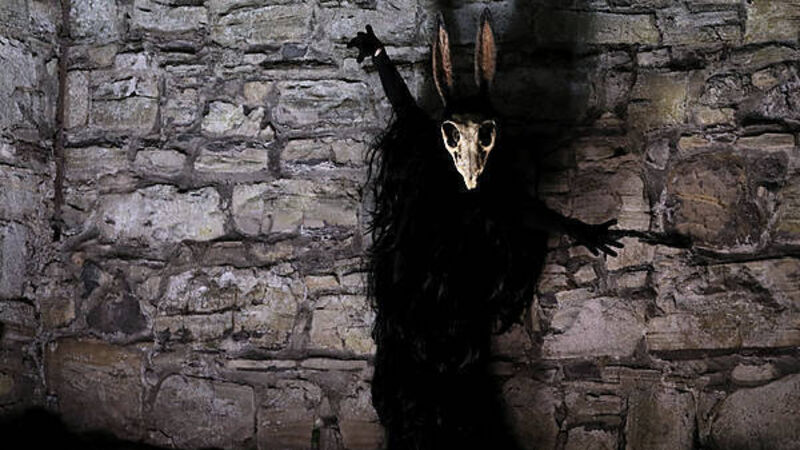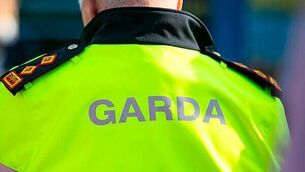Spooky figures from Irish mythology: Headless horsemen, wailing women, and Púca

Eva Osborne
Ireland is the birthplace of Halloween.
Samhain, an ancient Celtic festival, was first celebrated on the island over 2,000 years ago and marked the end of the harvest season and the beginning of winter.
Even modern-day Halloween traditions, like wearing costumes and carving pumpkins, come from ancient Samhain practices.
As the home of Halloween, it's only right that we have some of the spookiest mythological creatures.
From the headless horseman known as the Dullahan to the wailing woman we all know as the Banshee, Irish mythological creatures definitely take the cake when it comes to fearsome figures we hope will leave us alone on October 31st.
But what are the tales surrounding these figures? And what does seeing or hearing them supposedly signify? Keep reading to educate yourself on all things spooky from Irish mythology.
Dullahan (The headless horseman)
The Dullahan, also known as the headless horseman, is said to be the embodiment of the Celtic God Crom Dubh.
The headless horseman roams across Ireland looking for his next victim.

There are a few theories on how he lost his head. The main one being that he was a soldier in his previous life and had his head taken from him in battle.
The Irish Place said that his roaming is meant to depict him searching for his lost head for all of eternity.
However, some stories suggest that he already has his head and that he rides with a darker purpose, believed to be so bitter about his own death that he searches for other souls to take with him to the afterlife.
The Dullahan is commonly portrayed either riding on the back of a black horse, headless, or riding a black carriage that is pulled by six black horses.
It is said that these horses ride so quickly and ferociously that fire emanates from both their nostrils and their hooves as they strike the ground.
He wears a long, black cloak that flows behind him as he rides through the lands and he is known to hold his severed head high into the sky in search for the souls that he wishes to take.
According to The Irish Place, the Dullahan's severed head has a terrible appearance, covered in rotting flesh that gives off a strong odour.

"No locked gate stays closed when he approaches, bursting open to let the Dullahan through.
"As he makes his way through towns and villages after dark, the people hide behind their curtains because if anyone were to look at him, they would be immediately blinded.
"This he causes by whipping their eyes out with a whip made from a human spine, or by throwing a basin of blood into their eyes.
"He has the ability to speak only once on a journey and that is to say the name of the person whose life he wishes to take."
Once the Dullahan states this name, that person’s soul is called to death and there is no defying this call, The Irish Place says.
"The Dullahan does this when he stops, and it is then that he will call the name of his victim and that person will die."
Banshee (The wailing woman)
According to Linda Raferty of Irish Jewelry Craft, the banshee is one of Ireland's most enduring and terrifying legends.
The term banshee (bean sí) means 'woman of the fairy mound' or 'fairy woman'.
The mythological Irish female spirit is characterised by her eerie weeping, wailing, and screaming, which is believed to be a "warning of imminent death".

While not often seen, the banshee's shrieks can be heard usually in the middle of the night, when someone is close to death.
Raferty said legend says that, if seen, the banshee will vanish into a cloud of mist.
In terms of appearance, she is sometimes associated with long hair, and combing it while she weeps and screams.
The majority of tales about the banshee that describe her height state her stature is short, anywhere between one foot and four feet.
Irish poet Lady Wilde said her exceptional shortness often goes alongside the description of her as an old woman.
Mentions of banshees reach as far back as 1380 to the publication of the Cathreim Thoirdhealbhaigh (Triumphs of Torlough) by historian Seán mac Ruaidhri Mac Craith.
Púca (the shapeshifter)
The Púca is a sort of animal spirit or goblin shapeshifter of dubious intentions.
Stories vary in terms of the Púca’s designs, and they are thought to bring both good and bad fortune, depending on their mood.
According to Dawn Rainbolt of Wilderness Ireland, the púca are "shape-shifting troublemakers".
Legends say that the Púca can change into horses, goats, cats, donkeys, bulls, dogs, foxes, wolves, and hares, but always with jet-black fur.

The Púca is generally thought to inhabit Ireland’s most remote places, like hills, mountains, and bogs.
"Most tales of humans interacting with them happen during the night, particularly after the unlucky person is leaving the warmth and cosiness of the pub for the chilly, inky blackness of an October night," Rainbolt said.
"Though stories about the púca are vague and varied, one common similarity is the Púca’s love of mischief.
"Mischief can take many forms, but one favourite with the Púca seems to be taking their preferred animal form of a great black horse and enticing the unwitting rider on its back for a wild and terrible horseback ride through the night.
"Usually, this person has been on the drink, and even if they haven’t, the Púca bewitches them, leaving them with a bad feeling and hazy recollections of a night poorly spent. As you can imagine, that would frighten anyone – though little actual harm is done."
Some stories are darker than this, framing the Púca as blood-thirsty creatures that hunt and kill humans.









